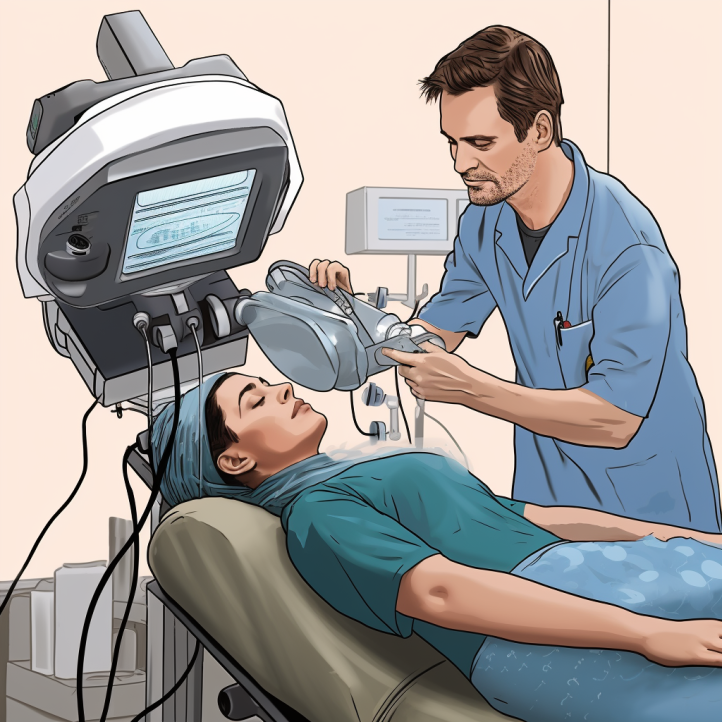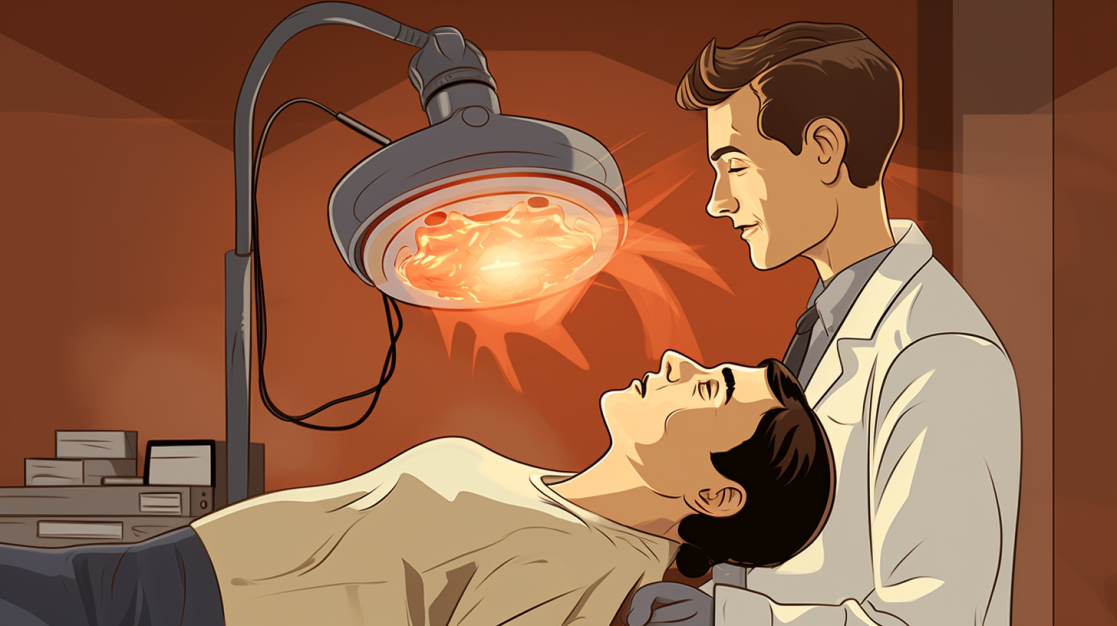Focused ultrasound (FUS) is an exciting noninvasive brain treatment technology that is revolutionizing how we approach neurological and psychiatric diseases.
This incisionless technique uses precisely targeted sound waves to therapeutically stimulate or ablate brain tissue.
The Big Picture:
- FUS uses focused, high-intensity sound waves to precisely treat diseased brain regions without incisions.
- It has FDA approval for essential tremor, Parkinson’s dyskinesia and shows promise for brain tumors, Alzheimer’s, OCD and more.
- The technology can thermoablate tissue, open the blood-brain barrier, and neuromodulate brain activity.
Key Facts:
- FUS was first used in the 1950s but only recently became viable with integration of real-time MRI guidance.
- Clinical uses include:
- Thermoablation of the thalamus for essential tremor and Parkinson’s dyskinesia
- Opening the blood-brain barrier to deliver chemotherapy for brain tumors
- Neuromodulation of brain regions involved in OCD, depression and consciousness disorders
- It is noninvasive, incisionless and offers real-time control unlike other surgical brain treatments.
- Ongoing research is expanding clinical applications and improving technology like skull attenuation.
Source: Front Neurol. 2022
From Thermal Brain Lesions to Precision Neuromodulation
The origins of focused ultrasound date back to the 1950s, when pioneering researchers first documented its ability to create thermal lesions deep in the brain.
However, major advances were needed to harness and control this technology for precise clinical applications.
A key breakthrough came in the 1990s with the integration of MRI guidance.
This allowed real-time anatomical visualization and temperature feedback during treatment.
Early clinical trials in the 2000s targeted essential tremor and Parkinson’s disease by thermoablating diseased areas like the thalamus.
Since its FDA approval for essential tremor in 2016, FUS has expanded into amazing new capabilities like temporarily opening the blood-brain barrier and targeted neuromodulation.
The future possibilities seem endless for this noninvasive, incisionless approach to treat neurological and psychiatric diseases.
FDA-Approved Brain Lesioning for Movement Disorders
FUS is clinically approved by the FDA for creating thermal lesions in the thalamus to treat medication-refractory essential tremor and Parkinson’s tremor.
More recently in 2021, it gained FDA approval for pallidotomy lesions to treat Parkinson’s dyskinesia.
This involves ablating part of the globus pallidus to control dyskinetic movements induced by long-term levodopa use.
In these procedures, FUS precisely focuses multiple intersecting beams to a tiny target region.
MRI thermometry provides real-time temperature monitoring to control the thermal dose and lesion size.
Clinical trials show up to 80% improvement in tremor after a 30-60 minute outpatient procedure with minimal side effects.
FUS may appeal to those reluctant to undergo deep brain stimulation surgery.
Blood-Brain Barrier Opening: A Delivery Platform
Another major clinical direction is using FUS to safely open the blood-brain barrier (BBB) for targeted drug delivery.
The BBB prevents entry of nearly all large-molecule neurotherapeutics.
FUS gently opens the BBB at precise brain locations by vibrating circulating microbubbles with ultrasound pulses.
This localized and reversible opening enables targeted chemotherapy delivery in brain tumors.
It also allows large-molecule biologics and gene therapies to reach the diseased brain tissue they previously could not access.
Clinical trials are exploring FUS-enhanced delivery of chemo for glioblastoma, antibodies for Alzheimer’s plaques, and growth factors for neurodegeneration.
This platform could unlock a new wave of previously impossible brain drug treatments.
From Ablation to Neuromodulation: Restoring Brain Function

Perhaps most remarkably, newer applications of FUS are moving beyond permanent ablation towards targeted neuromodulation of brain activity.
Low-intensity pulses are believed to reversibly disrupt cellular function, exerting an inhibitory or excitatory effect depending on the protocol.
This has been used in animal models to alter consciousness, modulate seizures and affect emotional regulation.
Early clinical testing is exploring therapeutic neuromodulation of brain regions involved in mood disorders, epilepsy, consciousness disorders and neuropathic pain.
As other neuromodulation techniques like DBS require permanently implanted hardware, the possibility of incisionless, reversible modulation with FUS is generating great excitement in both research and clinical realms.
Optimizing FUS Technology for the Human Brain
Much ongoing research aims to optimize FUS parameters and hardware for treating neurological diseases in the highly complex human brain.
For example, aberration correction techniques are overcoming distortions from the skull that can impede targeting accuracy.
Improved MRI sequences visualize temperature changes and increases lesion delineation.
Intraoperative accelerometry and advanced imaging confirm targeting precision and enable closed-loop adjustment of FUS effects for each patient.
Overall, technological improvements should expand the therapies possible with focused ultrasound and the range of patients eligible for treatment.
The Future of FUS: Expanding Possibilities
Focused ultrasound is a highly versatile platform technology whose clinical promise for brain diseases grows continually.
As research elucidates pathological brain circuitry in neuropsychiatric illnesses, FUS offers an unparalleled ability to noninvasively intervene at a gross anatomical level.
The incisionless approach and real-time control over ultrasound effects gives FUS advantages over DBS, radiosurgery and ablation techniques.
With so many active research directions – from enhancing chemotherapy to restoring consciousness – focused ultrasound is poised to revolutionize how we understand and treat brain disorders.
For patients with neurological illness, this transformative technology offers new hope.
References
- Study: Clinical intervention using focused ultrasound (FUS) stimulation of the brain in diverse neurological disorders
- Authors: Hongchae Baek et al. (2022)







